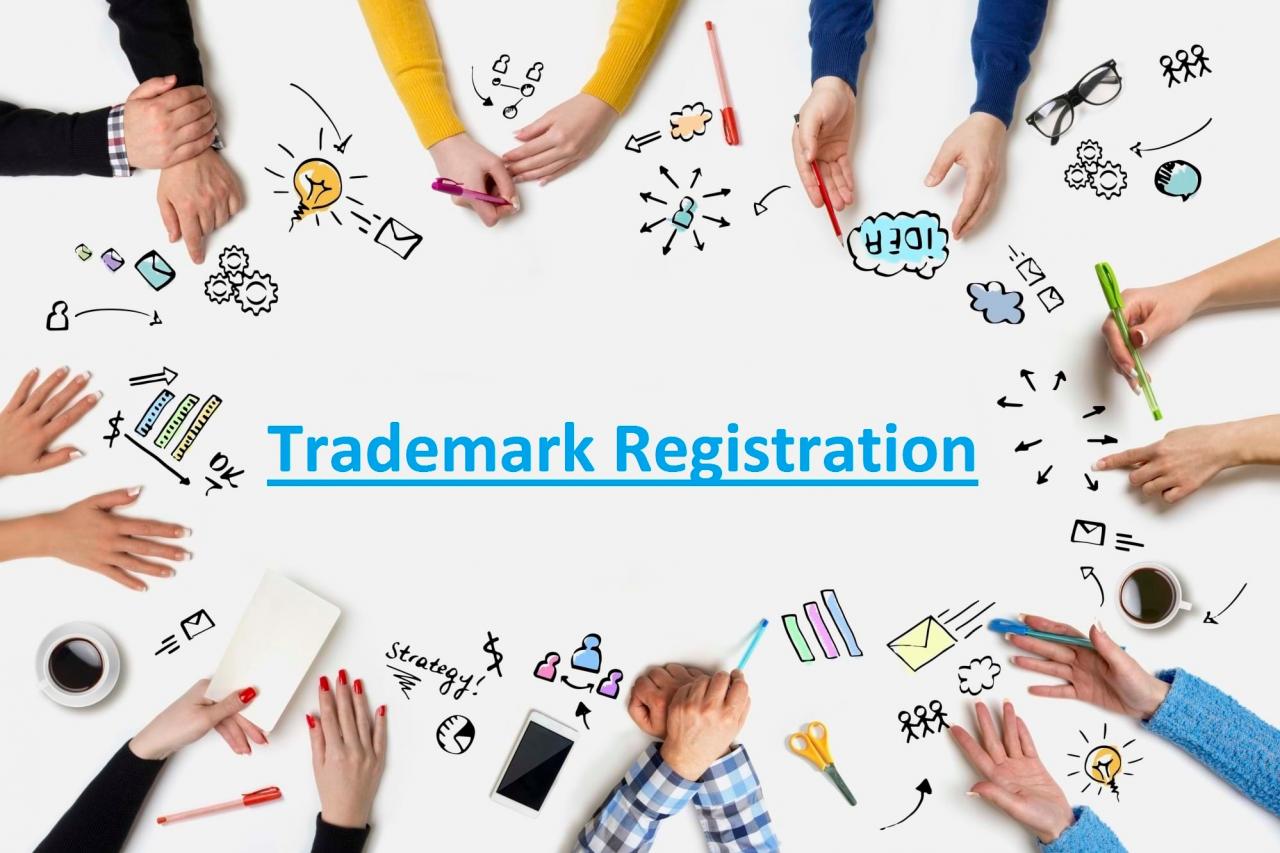Trademarks are regarded as one of a company’s most valuable intangible assets. Sometimes the whole value of the factory, investment equipment, products, supplies, and services is still less than the value of the enterprise’s brand names. As a result, trademark registration is not only a required and sufficient requirement for each item and service prior to entering the market, but it also serves as a foundation for the growth of the enterprise’s assets. The trademark of products and services is what buyers identify with the prestige, quality, and trust of a certain product or service. Because a trademark is a symbol used to distinguish one business unit’s goods and services from those of another.
WHAT IS TRADEMARK REGISTRATION?
Trademark registration in Vietnam is a legal procedure that involves applying to the National Office of Intellectual Property for the exclusive right to use a trademark or mark in a particular field(s) of products or services. The following steps are included in the trademark registration procedure: Execute the trademark search, Submit the trademark application. Keep track of the records, Granting a protection certificate or responding to a rejection notification Renewal of the trademark certificate is required.
Entities that can register trademarks in Vietnam
Individuals, organizations, and businesses are all eligible for trademark registration (According to the provisions of the Intellectual Property Law). This includes the following:
- Individuals, organizations, and businesses in Vietnam;
- Individuals and organizations from other countries.

HOW TO REGISTER A TRADEMARK IN VIETNAM?
Trademark registration in Vietnam must be done in accordance with the administrative processes approved and accepted by the NOIP. As a result, the trademark registration method involves the following phases.
Time allotted: 30 days, 10 hours, and 5 minutes
Individuals, organizations, and businesses in Vietnam
- Directly file a trademark registration application with the National Office of Intellectual Property;
- Apply for trademark registration with the National Office of Intellectual Property through intellectual property representative businesses.
Individuals, organizations, and businesses from other countries
- Trademark registration applications may only be submitted through Intellectual Property representative businesses, which submit trademark registration applications to the National Office of Intellectual Property.
Register trademark Vietnam with 5 steps:
Step1: Search for the possibility of trademark registration
There are two options for conducting a trademark search:
The first alternative: Submitting a trademark sample including the name of the product or business service to the law company.
The second method: Doing an online search on the National Office of Intellectual Property’s website by clicking on the following link:
http://iplib.noip.gov.vn/WebUI/WSearch.php
Step 2: File the trademark application
The following items are included in the trademark registration dossier:
- Sample of a trademark application
- List of products and services
- The application’s owner’s name and address (owner)
- Other papers proving registration eligibility (If any)
Receiving office:
- Applicants can submit their applications directly to the National Office of Intellectual Property in Hanoi or the National Office of Intellectual Property’s representative office in Da Nang, Ho Chi Minh City.
- Send your application to the National Office of Intellectual Property of Vietnam or one of its representative offices via post courier.
- Use the law firm to apply.

Step 3: Follow up trademark registration records at the National Office of Intellectual Property
Typically, the trademark registration procedure consists of the following steps:
- Formal application examination (01 month)
- Application publication (02 months)
- Substantive application examination (09 – 12 months)
- Make the certificate available (1-2 months).
Step 4: Grant protection certificate or respond to the refusal notification
The NOIP will issue one of two notices at the conclusion of the substantive assessment of the application at Step 3:
Notification of the results of the substantive examination: Accept the grant certificate, and the applicant must pay the granting fee within the time period specified.
Notification of refusal of a portion or all of the trademark application. The applicant may select one of the following response choices based on the refusal:
- Analyzing and reacting to the NOIP’s judgment that it is not persuasive.
- Removing a portion of a trademark or product/service list in order to protect the remaining portions.
- Please acquire a letter of approval from the owner of the mentioned mark. Cancel the referenced mark’s validity.
Step 5: Renew the validity of the trademark registration certificate
The trademark registration certificate is valid for ten years from the date of filing. The applicant may extend the validity of the certificate before it expires or after it expires for a period of six months.
For instance:
- The trademark was registered on January 10, 2010.
- The trademark will be valid for ten years, until January 10, 2020.
- As a result, the owner initiates the extension procedure from June 10, 2019 to July 10, 2020.
- If the trademark is successfully extended, it will be valid until 10/01/2030.
Priority right that influences the registration of trademark applications.
Priority in trademark registration influences whether or not other entities’ trademark applications are granted protective titles. Vietnam’s Intellectual Property Law and related international treaties provide that another entity may file an application for a topic that was the subject of the first application within a period of one year after its filing.
The application of the first applicant is still regarded to have the same filing date as the initial filing date and is granted priority protection. There is no way to ensure that a trademark that has been submitted and searched for trademark registration status will be awarded a protective title because of this situation.

Some components that do not have a protective title (i.e., exclusion signs should not be utilized as trademarks) are as follows:
- Trademarks are designed in the form of shapes, basic geometric symbols, digits, characters, and words from unusual languages (such as English, Japanese, Chinese and Latin translations)
- Trademarks are created to serve as indications of the time, place, manufacturing process, kind, amount, quality, characteristics, ingredients, uses, values, or other descriptive features of products and services.
- Trademarks are intended to serve as a description of the legal form and sector of business.
- Trademarks are designed as indicators of the geographical origin of products or services.
- Before filing for trademark registration, you should do a trademark search.
In Vietnam, how long is the term of trademark protection?
Trademarks are protected for ten years from the date of registration (priority date). Enterprises are entitled to renew their protection titles, and there is no limit to the number of extensions that can be granted. As a result, trademarks will be considered property throughout the course of an enterprise’s commercial operations.
Consultancy Service of Trademark Registration of GVLAWYERS:
- Provide legal assistance on trademark registration processes and requirements.
- Providing advice on the possibility of trademark registration;
- Free preliminary examination of the ability to register a trademark;
- Intensive trademark search at the National Office of Intellectual Property — at your own expense;
- Representing consumers for Trademark Registration and throughout the Trademark Registration procedure;
- Documentation/dossiers for trademark registration;
- Filing and monitoring the registration procedure, as well as application assessment at the National Office of Intellectual Property;
- Customers are represented throughout the whole process of establishing rights and responding to formal contact with the National Office of Intellectual Property on trademark registration.
- Providing information to consumers and exchanging information with them during the trademark registration process.





![We Are Hiring Now! | Feb 2023 [CLOSED POST] Tuyen Dung](https://gvlawyers.com.vn/wp-content/uploads/2023/02/Tuyen-Dung-.png)


